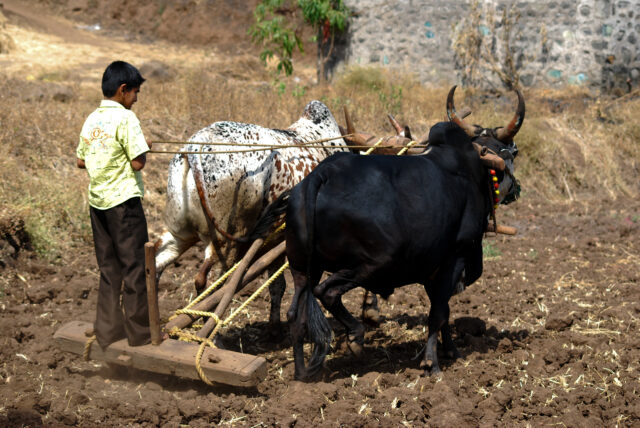When you sit down for breakfast tomorrow and eat melon or bananas or drink coffee, will you know if a child’s hands picked them?
The U.S. Department of Labor reports that, in Central America, Africa and Southeast Asia, underage children often work on coffee plantations. The agency’s “List of Goods Produced by Child Labor or Forced Labor” (June 23, 2021) enumerates 156 goods from 77 countries.
Most of us have heard of Oliver Twist, Charles Dickens’ orphan in 19th-century London. Oliver was born in a workhouse, forced into labor at age 9 and soon apprenticed to an undertaker.
Many may have thought that, thanks to Dickens and other writers who exposed the abuse of child labor in factories and farms of the time, such practices were only historical.
“Sadly, too many small hands are busy plowing fields, working in mines, traveling great distances to draw water and doing work that prevents them from attending school, to say nothing of the crime of child prostitution, which is robbing millions of children of the joy of their youth and their God given dignity.”
This is not a quote from Dickens, but from Pope Francis in a message to the fifth Global Conference on the Elimination of Child Labor this May in Durban, South Africa.
On June 12, we will mark World Day Against Children Labor. The International Labor Organization launched the annual event in 2002 to focus attention on the extent of child labor abuses. The day is supported by the United Nations.
A June 2021 report from the International Labor Organization and UNICEF estimated that 160 million children — almost one in 10 worldwide — work in forced child labor, an increase of 8.4 million over the previous four years. (Children working on their families’ farms are not considered “forced labor.”)

In the report, the United Nations notes that “throughout the world, around 218 million children work, many full-time. … More than half of them are exposed to the worst forms of child labor, such as work in hazardous environments, slavery, or other forms of forced labor, illicit activities including drug trafficking and prostitution, as well as involvement in armed conflict.”
And this is not just a problem in “poor nations.” World Vision International reports that, while sub-Saharan Africa has “86.6 million child laborers, more than anywhere else,” more than 93 million live in “middle-income countries.” And 1.6 million live in “high-income countries.”
These are often dangerous jobs and the International Labor Organization estimates that 22,000 child laborers are killed annually.
What can we do to stop child labor? Here are a few suggestions from the UN agency:
— Educate yourself. Many organizations provide updated information on child labor.
— Contact retail stores, manufacturers and importers to learn about the origins of their products.
— Buy fair trade and sweatshop-free products whenever possible.
— Grow more of your own food or buy from local farm markets.
— Share your time and money by donating to groups like Catholic Relief Services and Feeding America.
— Contact businesses that operate in countries that have child labor. Encourage them to take appropriate action to end child labor and use sustainable, fair-trade practices.
— Invest ethically. Shareholders’ voices can make a difference.
There’s a lot more you can do. What you should not do is forget or ignore. Dickens may have gone to his heavenly reward, but there are many Oliver Twists out there today. They need our prayers and help.
– – –
The views or positions presented in this or any guest editorial are those of the individual publication and do not necessarily represent the views of Catholic News Service or of the U.S. Conference of Catholic Bishops.








